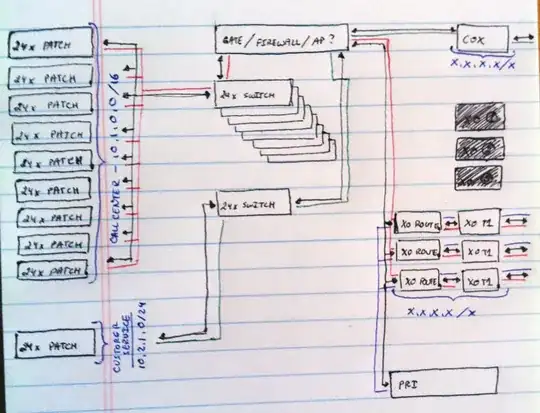So, I'm working on setting up a call center. Our outbound calls will be going to an off-site dialer so they'll be going over the internet as data (VoIP?). Then we have our customer service department, which will be, well, whatever they do...
My question is how do I segregate the two groups? We currently have COX Ultimate in (50D/5U), but I don't trust it. We're starting out with 24 outbound stations, but we want to grow it to 200-250, depending on what the building can fit. I just don't see that COX connection keeping up. So, I was planning on bringing in 3 T1s from XO and expand those as needed and just run the outbound traffic through them and all the remaning customer service traffic over COX.
This is the map I've come up with:

I don't know if that right at all. Do we need to have an XO router for each T1? Can the T1s be plugged directly into the gateway? If so, how many connections should I have on the gateway assuming I want to expand? We currently have a SonicWall TZ100. Also, what kind of switches should I use? L1, L2, or L3?
I'd appreciate someone who knows networking and phones if you can take a look and tell me where I'm wrong. Cost isn't so much a concern right now, but try to keep it reasonable if you're going to suggest hardware.
Thanks in advance!